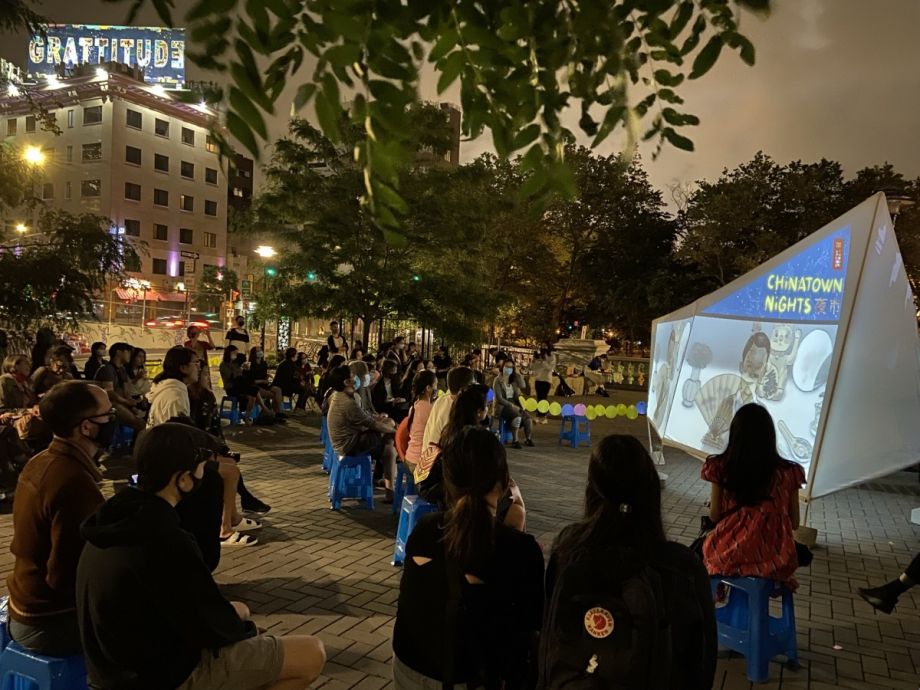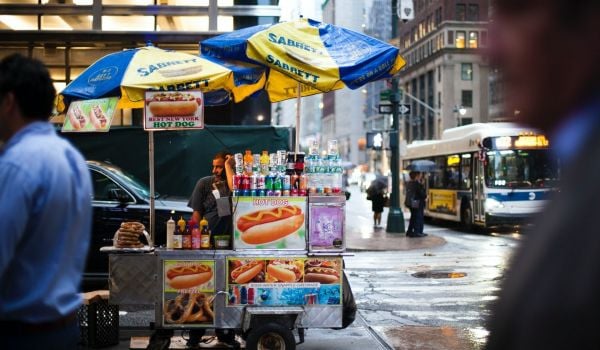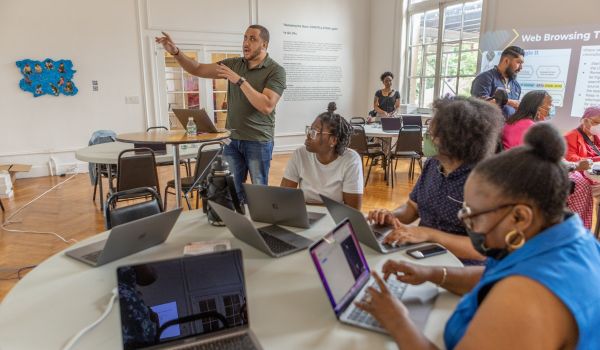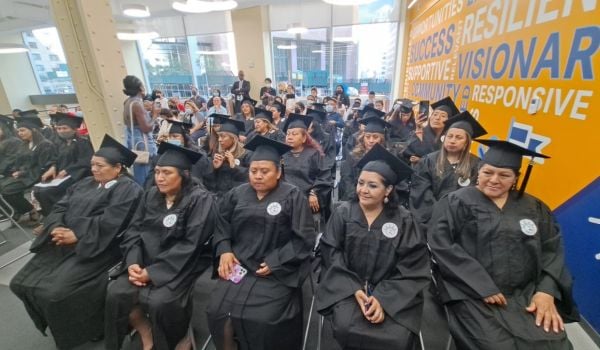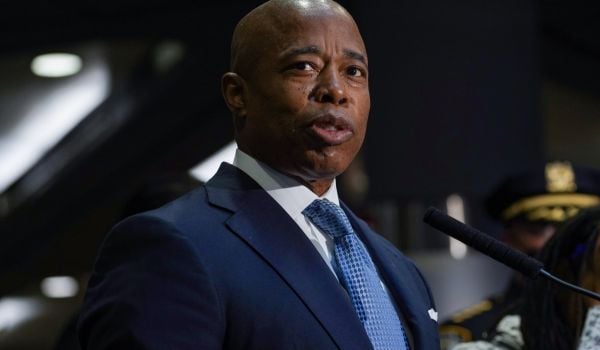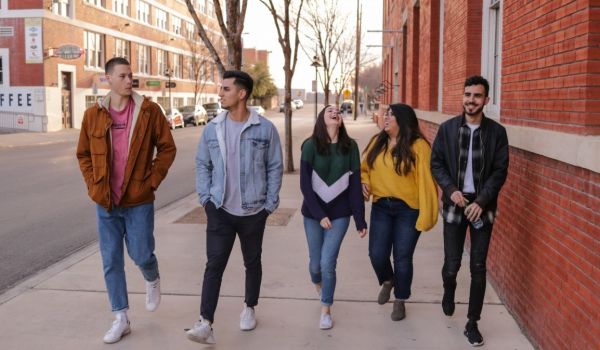For 17 months, Manhattan’s Chinatown has weathered one incredible challenge after another. The economic slowdown brought by COVID-19 hit earlier, and harder, here. Relief programs from governance and the private sector have by and large failed to adequately support residents and business owners. Those same folks faced a sharp increase in xenophobia, anti-Asian bias and violence.
Throughout it all, Yin Kong, the director of Think!Chinatown, and Thomas Yu, co-executive director of Asian Americans for Equality, only invested deeper into their community — from organizing housing, food and business relief to tracking the local impacts of COVID-19. This summer, the pair realized a long-time vision they believe can translate into deeper economic revitalization and support of small business owners.
The vision is Chinatown Nights, an open-air cultural festival in the heart of the neighborhood designed to be responsive to community needs. It’s supported by Neighborhoods Now, an initiative connecting the New York neighborhoods hardest-hit by the pandemic with design firms for pro-bono, community-centered work.
Think!Chinatown and Asian Americans for Equality (AAFE) became part of Neighborhoods Now’s second cohort this February and launched the first Chinatown Nights in June. (The third event is scheduled for Friday, September 10th.) But the goal of starting a night market goes back years.
Yu explains the neighborhood’s economic challenges date to the collapse of the garment industry — which was a primary anchor of employment — caused by 9/11. “We saw that tourism and the restaurant sectors alone are not sufficient to support a vibrant, sustained authentic neighborhood for local residents,” he says. “This is apparent at dusk, when Chinatown largely goes dark and there is little local activity, much less from folks coming from the outside.”
Local organizers began advocating for an arts and cultural anchor to create ties between older and younger generations of API New Yorkers and attract visitors from Asian Americans across the city, as opposed to just tourists. A night market, they believed, would bring more evening foot traffic while also supporting API food vendors and artists. “Claiming space at night was important to us,” says Kong, “And the longer-term idea was incubating micro businesses.”
Kong and Yu pitched the idea to Neighborhoods Now, an initiative launched in May 2020 by the Urban Design Forum and Van Alen Institute. “We saw that our collective networks of designers, planners, engineers and landscape architects were looking for a way to support our communities that were hardest hit,” notes Martha Snow, program manager with the Urban Design Forum. “We observed that many of these communities didn’t have the resources to make their restaurants and small businesses safe during the pandemic.”
The initiative pairs small businesses and community-based organizations with pro-bono designers, and provides them with seed funding, resulting in a wide range of projects: activating public plazas and open streets, helping restaurants build outdoor dining space, designing COVID safety measures for community hubs. After success with the first cohort, Neighborhoods Now expanded with working groups in Chinatown and the South Bronx. “Yin and Thomas had clearly been thinking about urban design and public space as an asset for the community for a long time,” says Andrew Brown, director of programs for Van Alen. “As they walk through Chinatown, and see all the ways people connect with each other or maybe don’t, they are coming up with all these ideas and potential projects to get more out of every square foot.”
Neighborhoods Now paired Think!Chinatown and AAFE with architecture firms Leroy Street Studio and di Domenico + Partners, engineering firm Buro Happold and law firm Fried Frank. Together they figured out how to transform Forsyth Plaza, located in the heart of the neighborhood, into a vibrant, COVID-safe night market.
AAFE and Think!Chinatown were well suited as partners: “AAFE had wherewithal to provide necessary insurance, government agency facilitation and back-office support, but we were upfront with Think! that we were not an arts organization,” Yu says. “We wanted to create an environment where a group like Think! could shine and put together their arts programming content, which they excelled at.”
The architects provided technical assistance on issues like electrical setup and following the city’s COVID protocols, while also designing a site master plan knowing the goal is to transform the plaza into a permanent night market. “This beta version, this summer, was going to be proof of concept,” explains Leroy Street Studio architect Allen Gillers. “But at the outset it was clear there was a long-term goal in mind.”
Chinatown Nights, so far, has featured art vendors of traditional Chinese crafts, including sugar painting art and braided straw figures, alongside singers, a storytelling program and a special lightbox that displays Think!Chinatown’s body of work in visual storytelling projects, historic footage of Chinatown and other Chinatown-relevant works. Past food vendors have included Himalayan-style dumplings known as momos, Vietnamese food and fresh juice.
“The process is not one and done,” Kong says of evolving the market. “With community work you’re always adjusting.” The ultimate goal is moving beyond the pilot phase — which has only allowed the team to work with mobile vendors — to support and hopefully incubate other small businesses and food vendors. The Neighborhoods Now partners will support the pilot as it grows into the next phase next year. (Neighborhoods Now has received additional funding to continue its work for the next few years.)
The markets, so far, have been well-attended and generated positive community response for generating a safe space for the API community. “The success bodes well for the future of Chinatown as a cultural heart and vindicates our two decade long stance that the future of Chinatown must first come from authenticity and lived experience within, and can be found in arts and culture,” Yu says.
It’s one important component, he believes, on the path to “an equitable renaissance of our community.”
This article is part of “For Whom, By Whom,” a series of articles about how creative placemaking can expand opportunities for low-income people living in disinvested communities. This series is generously underwritten by the Kresge Foundation.

Emily Nonko is a social justice and solutions-oriented reporter based in Brooklyn, New York. She covers a range of topics for Next City, including arts and culture, housing, movement building and transit.
Follow Emily .(JavaScript must be enabled to view this email address)

